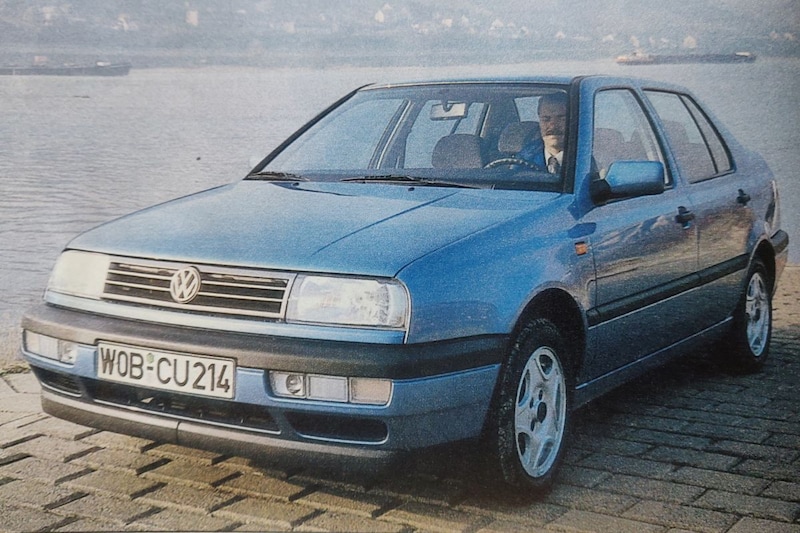At the beginning of 1992, the Volkswagen Vento appeared on the scene. To put it bluntly, the sedan version of the Golf III and therefore also the successor to the Jetta. A first acquaintance showed that the Vento was more than a ‘Golf-with-ass’.
In the summer of 1991 we were introduced to the Volkswagen Golf III. Although it still showed some similarities with its predecessor, it could really be seen as a child of its time thanks to the more rounded shapes and especially the smoother shaped dashboard. As was customary back then, we were looking forward to a version with a butt on it. After all, sedans were still popular, so the arrival of the Vento was big news. After the Jetta, the new name took some getting used to and that was not the only change of course that stood out to the newcomer.
For starters, there was the look of the Vento. Volkswagen had made an effort to make it even more distinctive. This was of course mainly reflected in the butt, but the front was not just transferred from the Gulf. The Vento got other headlights that bordered from top to bottom on the somewhat higher grille.

At the butt, it was especially noticeable that Volkswagen had gone for a fairly high tailgate. Predecessor Jetta was a bit more slender in shape in that regard. Of course, this had to contribute to a very acceptable luggage space for a sedan. 550 liters of luggage space was available in the Vento. Those who wanted more could fold down the rear seat in two parts. In addition, we noticed a less successful detail: you had to remove the headrests to be able to fold the couch completely down and they ‘swung around carelessly’. We thought it was a nice detail that you could lock the back seat with your key. For example, someone who wanted to get to the luggage by smashing a window could not just get into the trunk.

In terms of motorization, it seemed obvious with the Vento on the Golf, only the power sources in the Vento had a little more weight to resist. We discovered that the 1.8 with 75 hp power in itself was sufficient for the Vento, but that the 90 hp version was somewhat preferable if you often go out with the whole family and, for example, also have a trailer behind the car wanted to hang. With the 115 hp 2.0 you simply had a smooth car on the Vento, although we noticed that he was a bit noisy inside. The 75 hp 1.9 TD was also recommended, thanks to the turbo it had the sharpness that the atmospheric 1.9 lacked. A year later, the Vento was also available with the 1.9 TDI, which turned it into a diesel party. The crème de la crème was of course the Vento VR6. Those were the days, a thick V6 in an otherwise civilized sedan in the compact middle class.

Volkswagen Vento VR6
The Vento grew into a modest success in the Netherlands. In its first full year of sales, 1993, 5,650 units were sold and in its last year (1998), the Vento still managed to reach just under 4,000 units in sales. In the end, the counter came to a total of more than 27,000 pieces. Yet that was little compared to the Golf, because almost so many were sold in one year.
– Thanks for information from Autoweek.nl






